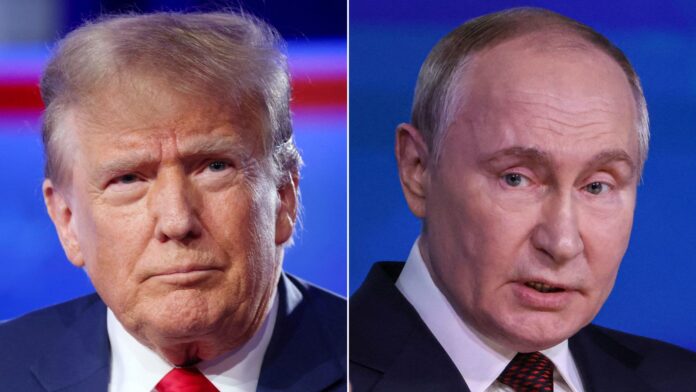Deadline passed and no deal came
President Trump set a time limit for Russia to agree to a ceasefire in Ukraine. The deadline passed with no public deal. Soon after, the Kremlin said Presidents Trump and Putin will meet in the coming days to talk. That shift raised questions about how and when the United States will carry out promised penalties on countries that keep buying Russian oil.
Tariffs start now and signs point to more pressure

The White House has begun using trade steps to punish buyers of Russian oil. The president signed an order that adds 25 percent in duties on Indian imports. That move brings total U.S. duties on some Indian goods to 50 percent, and it marks a first concrete step in the new pressure plan.
Lawmakers in Washington have also pushed a bill that would let the president levy much larger tariffs, even up to 500 percent in some cases, though that measure still needs to clear Congress. These tax moves aim to cut off cash that supports Russia’s war. At the same time, they could raise fuel costs worldwide and hurt trade ties with big partners like India and China.
Diplomacy moves at the same time
A U.S. envoy met with President Putin in Moscow for hours this week. After that visit, Kremlin aides said the two leaders would meet soon, and officials named possible venues in places such as the United Arab Emirates. Mr. Trump said he will meet Mr. Putin even if Vladimir Putin does not first meet with Ukraine’s president.
That stance shows a change from earlier U.S. comments that suggested a three way meeting would be better. The new approach adds urgency to the question of how the United States will use both talks and trade pressure at the same time.
What this could mean

These moves carry big risks and a few possible rewards. If the United States and partners can slow Russian oil exports, Moscow may lose money it uses for war. On the other hand, cutting supply could push oil prices higher. Higher fuel costs will hit people in many countries.
Markets already moved when the meeting news came out and oil prices fell a bit on hopes of diplomacy. Still, experts say a full cut in Russian exports could lift prices well above current levels and could hurt the U.S. economy. The plan also tests ties with India and China. New Delhi has criticized the tariff and may respond in ways that complicate trade talks.
My analysis
I see two threads at work now. One is pressure through trade and finance. The other is direct talks between leaders. The plan tries to force change by shrinking money flows while keeping a door open for a deal at the top. That approach may work if many countries join in and enforcement is tight. Yet I doubt many large buyers will quickly stop taking cheap oil. They need fuel and they also want to keep supply steady.
That gap makes the U.S. move risky. It can strain alliances and raise costs at home. If oil moves up by a lot, the political cost could hit the U.S. leader and weaken public support for the strategy. At the same time, a real face to face between the presidents could lower tensions for a time, but it could also leave Ukraine out of key talks and create new problems for Kyiv. In short, this course is bold but hard to make work. Success will need wide cooperation and very strong enforcement.
What to watch next
Watch for the site and date of the Trump Putin meeting. Watch for any steps to widen tariffs to China and other buyers. Watch oil prices and signals from big buyers like India on how they will respond. Also watch Congress for moves on the new sanctions bill. These signals will show if the plan is mainly pressure, mainly diplomacy, or a mix of both. Reuters
Sources: reuters.com

